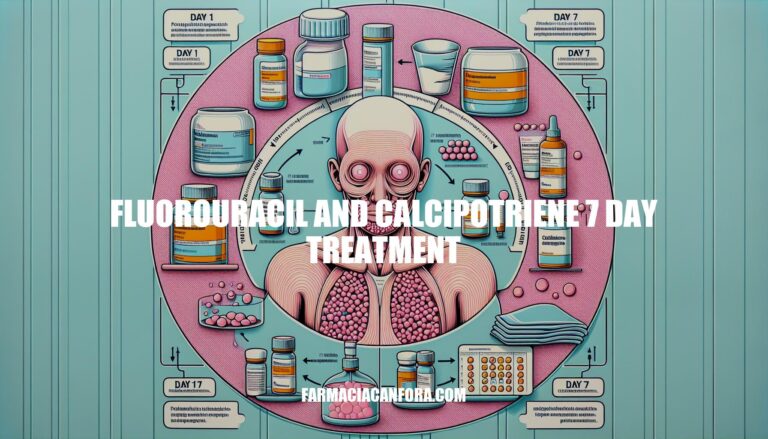


The calcipotriene-4-day-treatment”>fluorouracil-and-
The fluorouracil and calcipotriene 7-day treatment is used primarily for treating sun-damaged skin and precancerous lesions like actinic keratosis.
Fluorouracil works by causing an inflammatory response. It targets rapidly dividing abnormal cells, leading to their destruction. This results in redness, crusting, and peeling of the treated area as the damaged cells are eliminated.
Calcipotriene, a vitamin D derivative, stimulates the immune system to attack the damaged cells. It enhances the body’s immune response, making the treatment more effective and reducing the overall treatment duration.
Together, these medications provide a dual approach: fluorouracil destroys the abnormal cells, while calcipotriene boosts the immune response to clear the damaged cells more efficiently. This combination allows for a shorter and more tolerable treatment course compared to using fluorouracil alone.
Here are the specific steps for the ‘fluorouracil and calcipotriene 7-day treatment’:
If your skin feels irritated or dry, you may apply a moisturizer or Vaseline.
The combination of fluorouracil and calcipotriene for a 7-day treatment has shown promising results in clinical studies and patient outcomes. This regimen is particularly effective for treating actinic keratoses (AKs), which are precancerous skin lesions.
Clinical Studies: Research indicates that this combination therapy significantly reduces the number of AKs. One study found that it lowered the risk of developing squamous cell carcinoma (SCC) on the face and scalp over a three-year period. Another study highlighted its effectiveness in activating immune cells against cancer, which is beneficial for organ transplant recipients with a higher risk of skin cancer.
Patient Outcomes: Patients generally experience a marked improvement in skin appearance, with a large clearance of solar keratosis and smoother skin by day 10-14. However, complete clearance of AKs was achieved in only 27% of participants in one study. Despite this, the treatment is well-regarded for its ability to reduce long-term cancer risk.
Overall, the 7-day treatment with fluorouracil and calcipotriene is effective in reducing AKs and lowering the risk of SCC, though complete clearance rates can vary.
Potential Side Effects:
Management Strategies:
The fluorouracil and calcipotriene 7-day treatment is a topical therapy used to treat pre-cancerous skin lesions, such as actinic keratoses. This combination therapy effectively targets and clears sun-damaged skin, reducing the risk of developing skin cancer.
It works by disrupting abnormal cell growth with fluorouracil and enhancing the immune response with calcipotriene. The treatment is well-regarded for its ability to reduce long-term cancer risk and has shown promising results in clinical studies and patient outcomes.
However, potential side effects include:
Management strategies include: